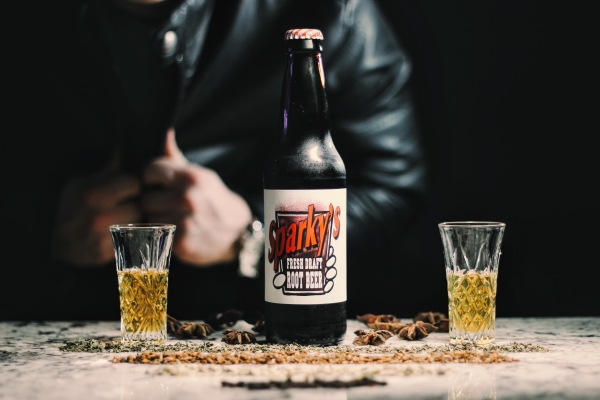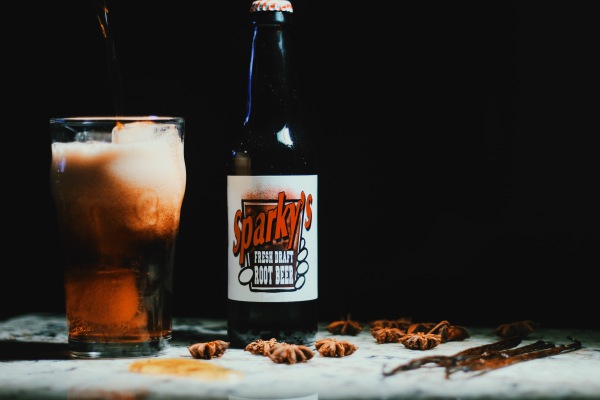History: Times were simpler at Grandma’s house. You’d play on the swing set, run around the yard, eat whatever you wanted; life was good. Grandma always had the best candy, the sweetest lemonade, and the softest beds. If you skinned your knee, you got a piece of candy. If you didn’t, you got a piece of candy. Rocketfizz co-founder Ryan Morgan wanted to bring that sense of wonder into the lives of kids and adults alike, saying “The sense of exploration and fun you used to have as a kid; those are the things we try to bring into our store.” In 2007 Morgan and his business partner Rob Powells opened their first Rocketfizz store. Rocketfizz sells a variety of craft soda, including many under their own label, as well as “over 15,000 different types of candy.” I can already see one of those click bait Buzzfeed headlines about the company: Dentists LOVE them! 15,000 reasons why Rocketfizz is bad for your child!” Somebody probably read this, made that, and is making money off it now. You’re welcome. But the whole thing almost didn’t happen. Rocketfizz got off to a rocky (looks around for approval, sees none) start. Their first contractor took their money “and bolted,” according to Morgan, and it only became more complicated from there. After an initial uphill battle, Rocketfizz is in peak growth mode, now in 30 different states and just opening its 82nd store as of April 2016. Perhaps most surprising about all the success is that the company doesn’t even have official offices. It’s all done at houses, on road trips, or just hanging out with one another. Having a background in the restaurant business since 2000, Morgan wanted a platform to take soda to the next level. He also had an intense passion for design and admits “We originally just wanted to do fun labels.” Rocketfizz allowed him to do both. If you see an novelty soda flavor on the shelves with an interesting label, chances are it’s made by Rocketfizz. The popular novelty soda line, Lester’s Fixins? Rocketfizz. Bacon soda? Rocketfizz. Hot Wing Soda? Yeah, all that stuff is made by these guys. “I don’t look at it any different than a restaurant with a menu. The more we push the limits on flavors, the more we see where people are willing to go,” Morgan tells us. I’ll be the first to tell you, not all of those novelty flavors are good. Some are wretched, liquid gastrointestinal torture. But others, like Scotty’s Butterscotch are more approachable and fun.
Just like the stores themselves, the inspiration behind Scotty’s Butterscotch Soda harkens back to the more nostalgic times of grandma’s home. Remember those yellow round candies she always had in the jar that you never ate? Those are what this soda is designed to taste like. “We wanted it to taste like a basic butterscotch wheel,” Morgan says. Admittedly, it’s more of an adult soda flavor. Morgan also has no problem admitting it’s not a huge seller. One thing it definitely is? Unique. I can name you several butterscotch cream sodas and root beers, but go find me another strictly butterscotch-flavored soda in America. You can’t. This has the market cornered in that regard. What the duo like most about the soda is the label. A Scotsman wearing a kilt next to a stick of butter. It’s a wee-bit strange, but it does catch the eye. Will it please the tummy?
Where to get: A sure-fire bet for purchasing Scotty’s Butterscotch soda in person is to stop by your local Rocketfizz store. Check out the company’s online locator to find the store nearest you. You can also purchase it online from Soda Emporium in single bottles or 4-packs.
Nose: Man, this is butterscotch alright. If you’ve ever poured warm butterscotch syrup over your ice cream, that’s what this smells like. Strong and sweet.
Taste: Butterscotch; vanilla; toasted toffee. The butterscotch flavor is immediate. It’s initially sweet, but not as sweet as the scent would lead you to believe. The taste of the butterscotch is unmistakable. It’s a very candy butterscotch flavor. Picture those little yellow-wrapped candies your grandma kept in the candy jar, but no one touched. These things (We always write the tasting portion of the review first before the history – so they really hit the mark here). You’ll also definitely taste vanilla on some sips, giving the soda a slightly creamy, but still overwhelmingly butterscotch characteristic. I think the most interesting flavor in Scotty’s Butterscotch Soda is a toasted toffee taste. P.S. that’s some nice unintentional alliteration. Those toasted notes provide a nice variance to the butterscotch’s sweetness. I have say this becomes sweeter as you drink it, though. But if you’re looking for butterscotch soda, look no further. The signature flavor here is unmistakable.
Finish: Lightly toasted butterscotch with mild notes of caramel that fades, leaving only butterscotch. Transitions from sophisticated to plain fairly quickly. Not much of a linger.
Rating: Let’s be real here, how many of you expect butterscotch soda with a dude playing bagpipes and a stick of butter on the label to be good? Sometimes the label is all you need to see to know a soda is going to be terrible, but Scotty’s Butterscotch Soda is one on which you should not form assumptions. And I’m not saying the label is bad, but it does lead me to believe I’m about to drink carbonated liquid butter. And for the right price, yeah I’d do it. But I’d drink Scotty’s for free and I think a lot of you would too because it has a sweet, candied butterscotch flavor with a supporting cast of vanilla and toasted toffee notes. The vanilla and toffee flavors are crucial because this is a soda that starts sweet and only gets sweeter as you drink it. And that is the soda’s main problem. The initial sweetness is right where this needs to stay, but instead it becomes overwhelming at times. Kids will probably love this because of its sugariness, but adults and craft soda fans may need to take their time with it. If you’re a big butterscotch fan, Scotty’s should be near the top of your wish list. The butterscotch flavor is on point. The vanilla provides a slight creaminess. And the toasted toffee notes give it some needed flavor contrast and slightly pull back the sweetness of the butterscotch. Scotty’s is a Rocketfizz-produced soda, and if I’m being honest, I haven’t heard a lot positive things about their in-house brands; this bucks the trend. Scotty’s Butterscotch Soda won’t be for everyone because of its intense sweetness and due to the fact that many people are averse to caramel’s less popular cousin. But if you’re up for an adventure and have an open mind, look for the bottle with the stick of butter and lad playing the bagpipes on it. You might just be surprised.













